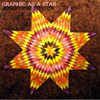 Psych-folk chanteuse Josephine Foster has always been a reliably unusual and singular artist, but her dissonant, artier tendencies have sometimes detracted from the beauty of her lilting, world-weary voice. With this release, a song-cycle based upon the poetry of Emily Dickinson, that experimental impulse is confined entirely to structure and concept. The result is one of her most ambitious, listenable, and mesmerizing albums, as Foster's gorgeously baroque vocals are finally allowed to swoop and quaver around comparatively simple and traditional melodies.
Psych-folk chanteuse Josephine Foster has always been a reliably unusual and singular artist, but her dissonant, artier tendencies have sometimes detracted from the beauty of her lilting, world-weary voice. With this release, a song-cycle based upon the poetry of Emily Dickinson, that experimental impulse is confined entirely to structure and concept. The result is one of her most ambitious, listenable, and mesmerizing albums, as Foster's gorgeously baroque vocals are finally allowed to swoop and quaver around comparatively simple and traditional melodies.
Graphic as a Star was conceived last winter while Foster was living in an isolated village in the mountains of Spain. She didn't bring many books with her, but one of the few that made the trip was a volume of Dickinson’s poetry, which understandably resonated deeply with Josephine, given her geographic and social isolation (Emily didn’t get out too much either). Inspiration struck and this song-cycle cohered in matter of mere weeks. Although Dickinson's poetry has been interpreted by some classical composers in the past, Foster sought to present it in a manner much more harmonious with the quiet intimacy of the source material. She was quite successful, as the naked elegance of these pieces perfectly suits the lonely lyricism of Emily's words. In general, the poems make an entirely seamless transition into song, but their varying lengths (and lack of a repeating chorus) do not particularly lend themselves to a traditional pop format: the 26 pieces collected here range in length from 30 seconds to five minutes. Consequently, nothing ever overstays its welcome, but sometimes the best moments are a bit too ephemeral.
It doesn’t seem like Foster brought many instruments with her to Spain either, as most of the songs feature only a lazily strummed acoustic guitar. Occasionally, a brief interlude of Dylan-esque harmonica playing will add a splash of color, but there are also quite a few songs that contain no instrumentation at all (unless chirping birds count). Given the fragile sadness of the material, that sparseness was a thematically appropriate artistic decision. However, it makes the songs pretty difficult to differentiate until they’ve been heard enough for the lyrics to sink in. There’s not much point in differentiating them though, as Graphic as a Star works most effectively as an album-sized dose. That said, there are a still few tracks that could work as singles, most notably the gently wistful “My Life Had Stood-A Loaded Gun” or the breezily swinging “I Could Bring You Jewels-Had I a Mind To.”
There are absolutely no freakfolk or psychedelic moments on Graphic as a Star at all, but it is a strange and anachronistic album anyway. There is certainly some superficial similarity to '60s folkies like Joni Mitchell, Joan Baez, or Shirley Collins, but Foster’s vocals are much more idiosyncratic. In fact, Josephine often sounds like a slumming classical vocalist, but one that has internalized a great deal of sultriness and looseness from early jazz and torch songs. Also, the songs themselves have a very timeless and traditional feel, like they could be hundreds of years old. Naturally, that feel is most evident on the a cappella pieces like the eyebrow-raisingly titled “Wild Nights-Wild Nights!” and “What Shall I do-It Whimpers So,” but even Foster’s guitar playing is simple enough to avoid alluding to any specific era. On a related note, it has been a long time since I have read any Dickinson, so I had forgotten about her sometimes-comic overuse of exclamation points (another charming example is “Heart! We Will Forget Him!”). Emily’s occasional melodrama, thankfully, is lost in the transition to song. In fact, there is almost nothing to find fault with at all. This is a warm, beguiling, and unexpectedly accessible album. I’m not sure if it is Foster’s best or not, but I think it will age extremely well.
Samples:
Read More

